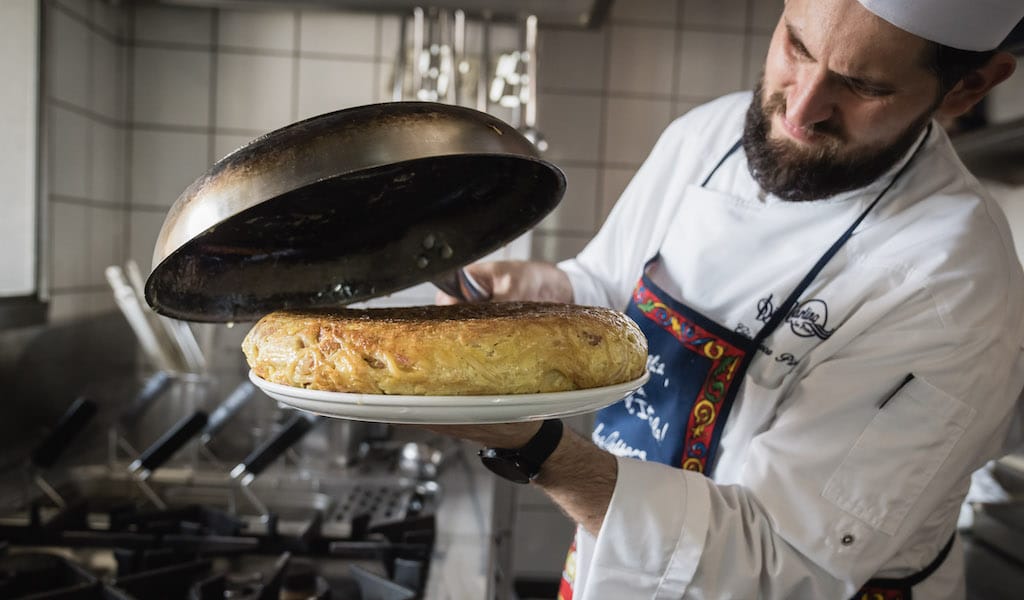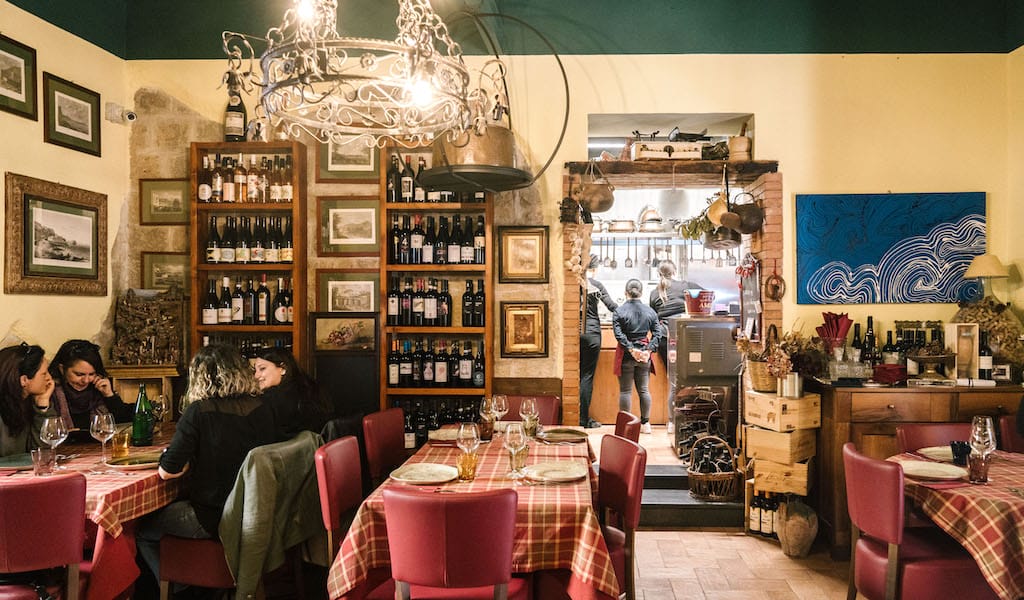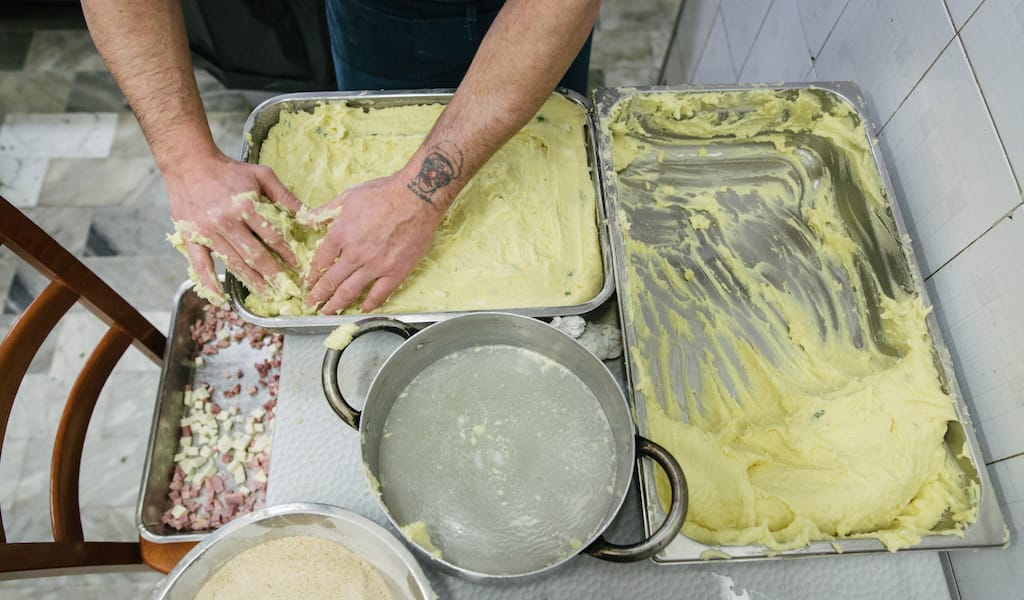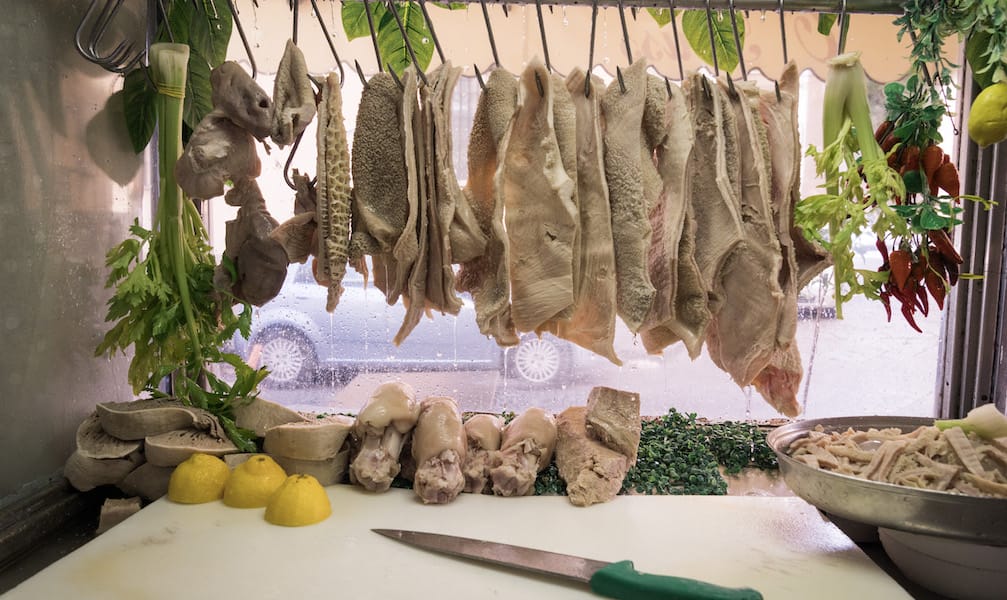The acclaimed Italian director Federico Fellini once said that “life is a combination of magic and pasta.” We’d argue that magic is, in fact, a combination of pasta and eggs.
Now, you’re probably thinking about carbonara, the ultra-famous Roman recipe based on eggs, bacon and cheese, whose uncertain origins are often ascribed to the interaction between locals and US soldiers during World War II. In Naples, however, this combination of ingredients – which come together in the local favorite frittata di maccheroni – has different, and more ancient, beginnings. A must-have at picnics and informal luncheons, a favorite for summer meals at the beach and a cherished memory from school trips, the frittata is a staple of domestic Neapolitan cuisine. Its name comes from the generic Neapolitan word for pasta, maccaruni, though today in Italy “maccheroni” refers to a specific kind of short pasta, which may create a bit of confusion. And while the frittata di maccheroni has historically been mistreated and stigmatized as a poor or unrefined dish, over the last few years it has gained back its glorious place on local deli counters.
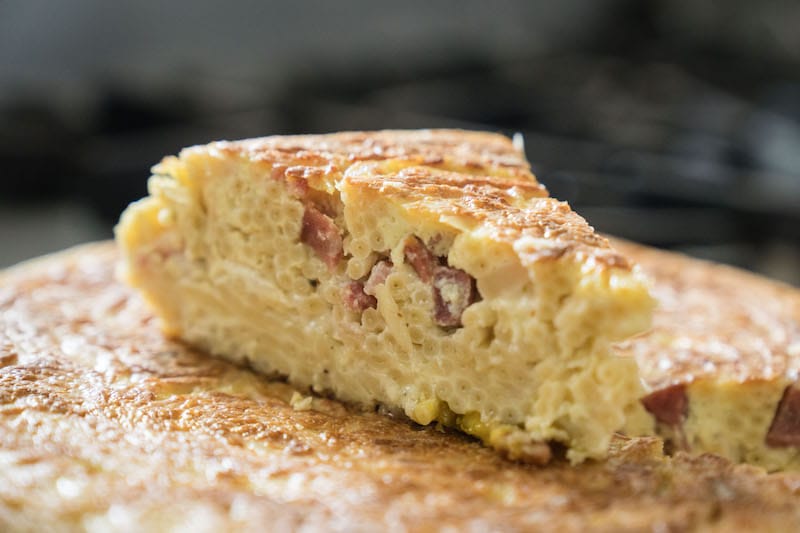
A classic leftover recipe, the dish was likely born prior to the 19th century as a way to reutilize what remained from the previous day’s meal – usually pasta, already boiled and lightly seasoned. This pasta might have been cooked at home or bought from the street vendors yelling “’o roie,” meaning “the two,” as it cost only two coins for this simple meal: long-cut pasta, spaghetti or similar, seasoned with Pecorino cheese, maybe a bit of tomato sauce, without any added fat, to be eaten with the hands.
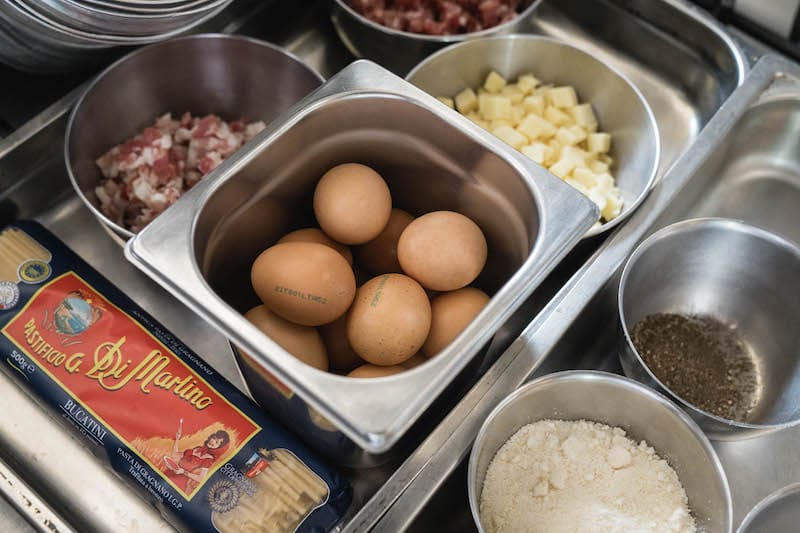
Housewives cleverly sought ways to create a more substantial meal for the family out of the humble leftovers: to the pasta, they added more cheese, a few pork scraps, a couple of eggs (in the best of cases), all heated quickly in a pan on the stove to compact everything together and give it a bit of crust. The results proved so tasty that improving economic conditions did not erase the dish, but improved it.
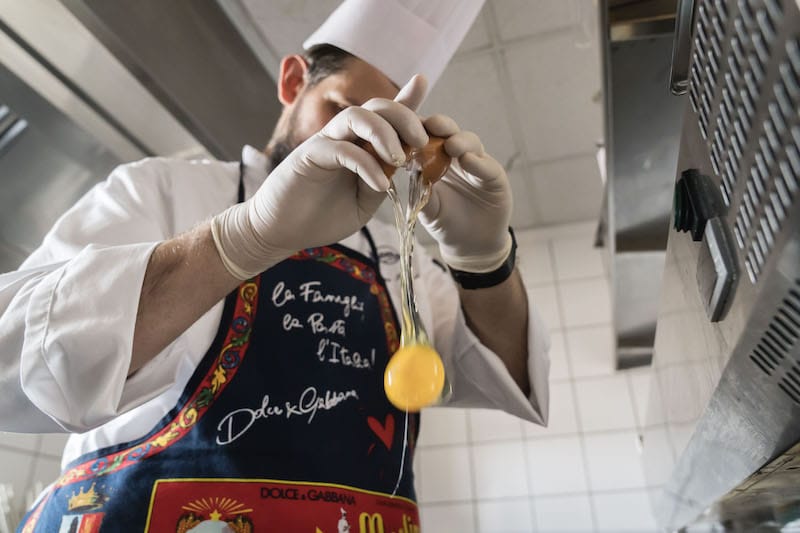
This is how the “macaroni omelette,” enriched with an abundance of cheese and salami, became a beloved staple among Neapolitan middle class, ever-present in such occasions as day trips to the countryside or to the islands in the Gulf of Naples. Soon, it conquered the local aristocracy, too, giving life to more elaborated and opulent versions of the frittata. Later on, it even gained a prominent place in the bountiful realm of Neapolitan rosticceria and fried-food tradition with the frittatina: a rich, deep-fried bite in which pasta is enveloped in a crunchy, golden crust, enriched with béchamel sauce, melted cheese and virtually infinite combinations of other ingredients. Today the frittatina is a ubiquitous feature in the starters section of pizza restaurants, too.
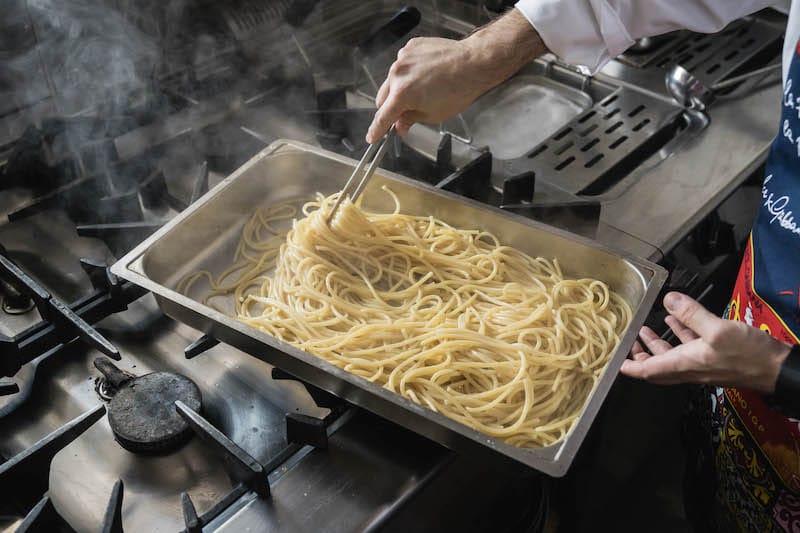
Yet, the righteous place for the proper frittata di maccheroni – which is quite rare, if not impossible, to find in restaurants and trattorias – remains the deli counter, where it is usually sold by the slice, cut out from a formidable pie, high and massive with its pale yellow, almost creamy interior and slightly burnt surface; or in smaller, thinner and crunchier versions often intended as single servings. Preference for one or the other mostly depends on personal taste and family traditions, like any recipes born in domestic kitchens.
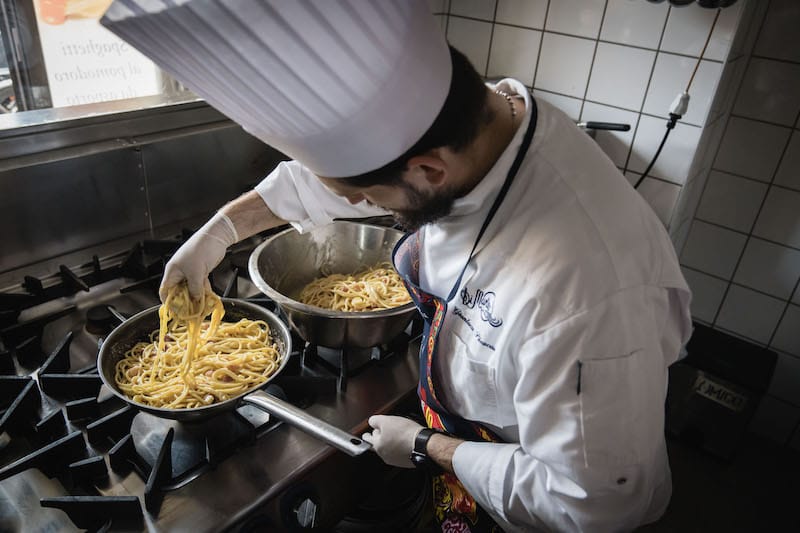
Gianluca Pisacane, chef at the Sea Front Pasta Bar – the brilliant restaurant and “showroom” of the local pasta brand Pastificio Di Martino, where only pasta-based options are served, both at the table and at the takeaway counter – leans towards the former. “We are quite tied to tradition,” he explains, rattling off numbers. “Thus, we make it quite high [in volume]: we use 750 grams of pasta and 13-14 eggs. And we cook it in a pan with the diameter of 32 centimeters.” The pasta – carefully and thoughtfully selected, as in every dish at Sea Front Pasta Bar – is also a nod to days gone by: “We use bucatini [a thick spaghetti-like pasta with a hole running through the center] since once upon a time, those who could not afford the mandatory candele di Gragnano for the Sunday ragu, opted for this humbler shape and used the leftovers to prepare the frittata.”
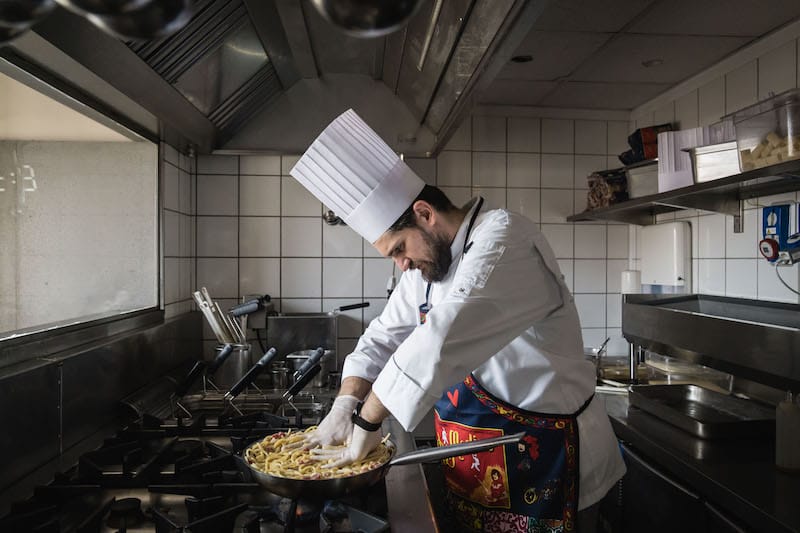
A waive from tradition (only slightly, though, since the habit is quite widespread nowadays), is in skipping the tomato sauce. To complete the tastiness and richness of the frittata, Pisacane adds grated Parmigiano Reggiano and Pecorino cheese, and black pepper to the beaten eggs; he soaks the al dente pasta in the mixture, then adds bacon and semi-hard cheese in small cubes. Once mixed well, he pours the mixture into a pan carefully greased with extra virgin olive oil to avoid sticking.

“Cooking the frittata is a delicate step,” he underlines. “It must be uniformly cooked over a wide, low flame. Cooking time is approximately 18 minutes on each side, without the lid, since an excess of moisture would make the frittata crack apart. While it cooks, you have to thoroughly press the surface, so that the egg mixture can penetrate into the pasta and form a crisp crust on the base. Then, you have to turn the omelet using the lid of the same pan,” the chef says, generously sharing some tricks of the trade: “I suggest to delicately detach it from the rims of the pan so as not to break it, and to add some more oil in the pan before cooking the second side.”
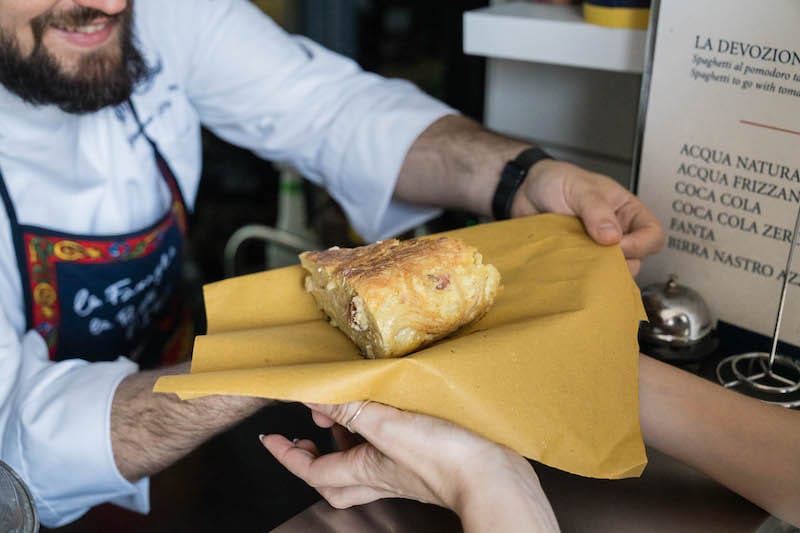
Pisacane serves a small cube of frittata di pasta as an entrée at the Sea Front Pasta Bar, carefully reheated to give it crunch and accompanied by the aromatic spiciness of a smidgen of ‘nduja, a flavorful, spreadable pork sausage. At the takeway counter, called La Devozione (after its quintessential spaghetti-tomato dish of the same name) the remarkable pasta pie is displayed proudly on the counter every day, sold in small (approximately 250 grams, 4 euros) or large (a quarter of the whole pie, making a decent lunch for 6 euros) portions. And it’s even possible to order a whole frittata, to share with friends and family on trips or luncheons. “We make at least one per day, but it goes very quickly!” says Pisacane. “Especially in summer, when people bring it to the beach. I suggest to eat it warm, waiting for at least one hour after cooking: this lets flavors and aromas to settle, so that one can savor it as its best.”
 November 6, 2023 Buatta
November 6, 2023 Buatta
Chef owner Angela Gargiulo calls her restaurant Buatta a trattoria di conversazione – a […] Posted in Naples October 10, 2023 Cibi Cotti Nonna Anna
October 10, 2023 Cibi Cotti Nonna Anna
Neapolitan cuisine is an impure thing, the result of culinary influences from every part […] Posted in Naples September 29, 2023 Tripperia O’Russ: No Guts, No Glory
September 29, 2023 Tripperia O’Russ: No Guts, No Glory
In a city like Naples, where almost every kind of street food – or food in general – […] Posted in Naples
Luciana SquadrilliGianni Cipriano and Sara Smarrazzo
Published on July 27, 2023
Related stories
November 6, 2023
NaplesChef owner Angela Gargiulo calls her restaurant Buatta a trattoria di conversazione – a “conversation eatery.” Tucked in a peaceful corner of Vomero, the Neapolitan shopping district, Buatta is “…a conversation restaurant in the true sense of the word,” Angela tells us. “After cooking, and now that I have excellent collaborators [to help] in the…
October 10, 2023
NaplesNeapolitan cuisine is an impure thing, the result of culinary influences from every part of the old continent. One of the most famous dishes this cross-pollination has produced is the Neapolitan potato gattò, a potato tortino rustico (a tall, square cake) with layers made of mozzarella, scamorza, ham, salami and more. A baroque dish, this…
September 29, 2023
Naples | By Luciana Squadrilli
NaplesIn a city like Naples, where almost every kind of street food – or food in general – seems to be carb-and-calorie laden, there's one unexpectedly light, all-protein option: ’o per’ e ’o muss’. This tongue-twister dish has roots in the same food traditions common to many Italian regions: back in the 18th century, the…







































